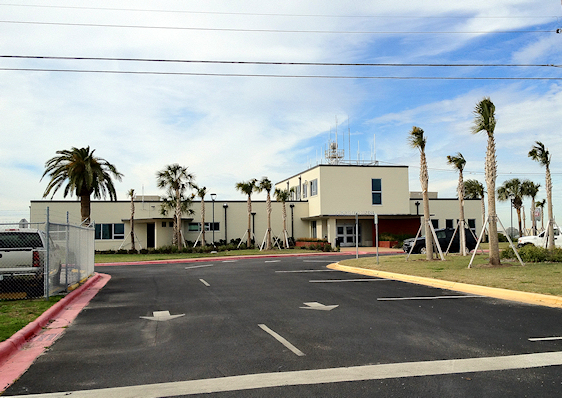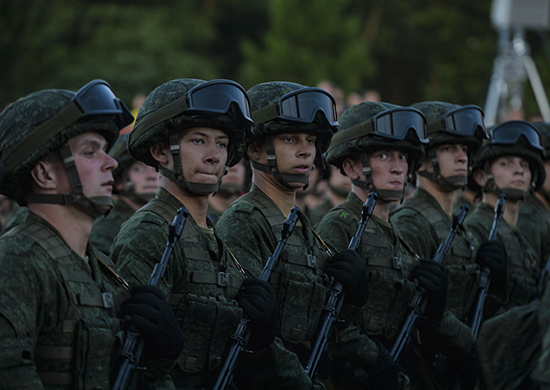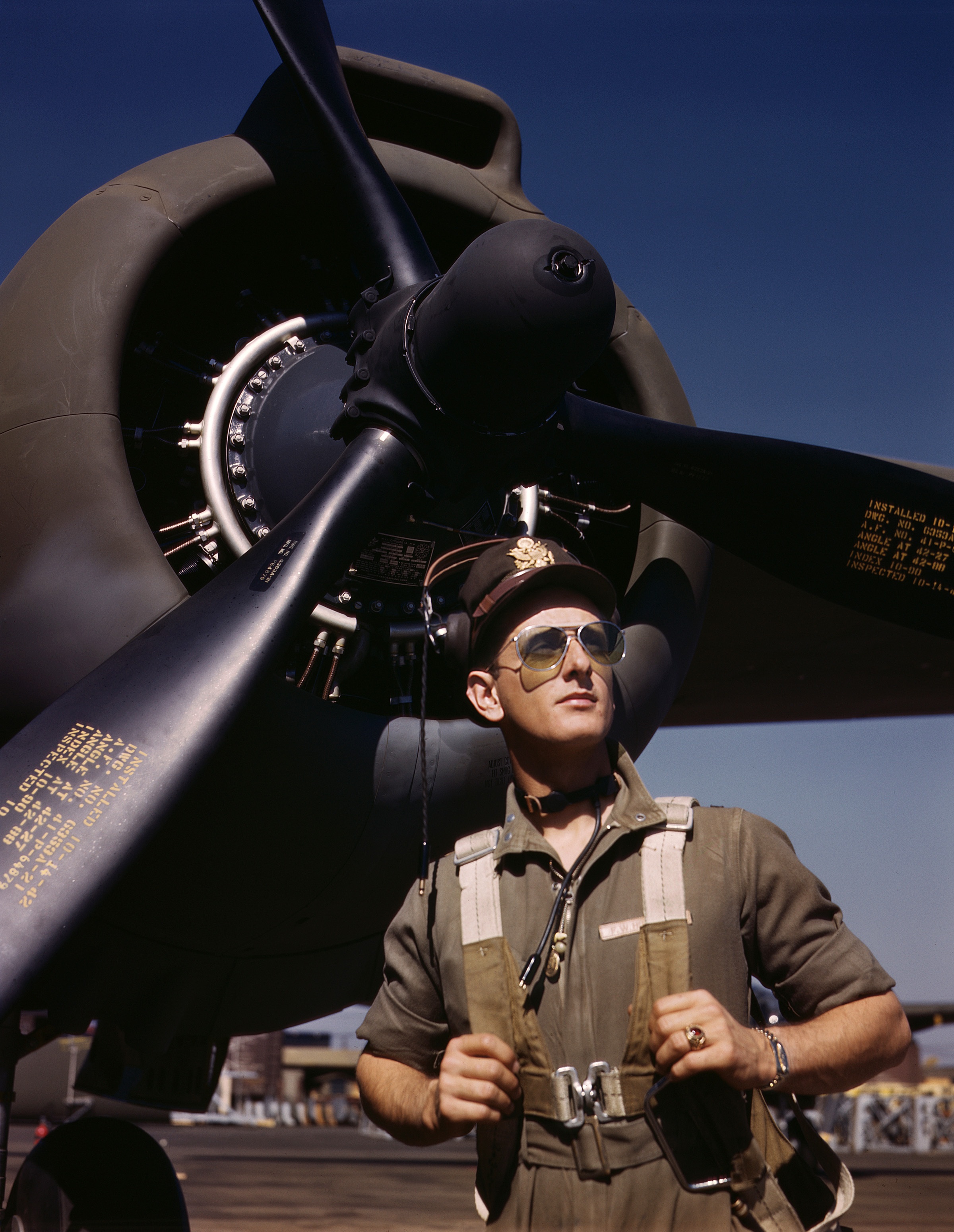|
51st Bombardment Squadron (Light)
The 51st Bombardment Squadron, Light is an inactive squadron of the United States Air Force last based at Birmingham Municipal Airport, Alabama. The squadron served on antisubmarine patrol early in World War II, then as a training unit until it was disbanded in 1944. The squadron was reactivated in the Air Force Reserve in 1947. It was called to active service in March 1951 for the Korean War and its personnel used as fillers for other units. The 51st was inactivated on 20 March 1951. History World War II The squadron was first activated as the 51st Bombardment Squadron (Light) in 1941. It was one of the four original squadrons of the 46th Bombardment Group. The 51st was equipped with Douglas A-20 Havoc aircraft at Hunter Field, Georgia.Maurer, ''Combat Units'', p. 110 The 51st participated in maneuvers, After the entry of the United States into the war, the squadron briefly deployed to Army Air Base, Manchester, New Hampshire.but then moved to Barksdale Field, Louisi ... [...More Info...] [...Related Items...] OR: [Wikipedia] [Google] [Baidu] |
Douglas A-20
The Douglas A-20 Havoc (company designation DB-7) is an American medium bomber, attack aircraft, night intruder, night fighter, and reconnaissance aircraft of World War II. Designed to meet an Army Air Corps requirement for a bomber, it was ordered by France for their air force before the USAAC decided it would also meet their requirements. French DB-7s were the first to see combat; after the fall of France, the bomber served with the Royal Air Force under the service name Boston. From 1941, night fighter and intruder versions were given the service name Havoc. In 1942 USAAF A-20s saw combat in North Africa. It served with several Allied air forces, principally the United States Army Air Forces (USAAF), the Soviet Air Forces (''VVS''), Soviet Naval Aviation (''AVMF''), and the Royal Air Force (RAF) of the United Kingdom. A total of 7,478 aircraft were built, of which more than a third served with Soviet units. It was also used by the air forces of Australia, South Africa, ... [...More Info...] [...Related Items...] OR: [Wikipedia] [Google] [Baidu] |
Galveston Army Air Field
Scholes International Airport at Galveston is three miles southwest of Galveston, in Galveston County, Texas, United States. The National Plan of Integrated Airport Systems for 2011–2015 categorized it as a '' reliever airport''. The airport provides charter service and has no scheduled flights; the runways can accommodate airplanes as large as the Boeing 767-200. Overview Operated and maintained by the City of Galveston, GLS is a general aviation airport. It has seen several airlines; from the 1930s until 1953-54 Braniff flew to Houston International (later named William P. Hobby Airport). Trans-Texas Airways "TTa", the forerunner to Texas International Airlines, arrived in the 1950s; until 1972 TTa Convair 600s flew nonstop to both Houston and Beaumont/Port Arthur and direct to Dallas and Austin. Later Galveston was served by Houston Metro Airlines De Havilland of Canada DHC-6 Twin Otters to Houston Intercontinental Airport (IAH), some stopping at Clear Lake City (CLC air ... [...More Info...] [...Related Items...] OR: [Wikipedia] [Google] [Baidu] |
Continental Air Command
Continental Air Command (ConAC) (1948–1968) was a Major Command of the United States Air Force (USAF) responsible primarily for administering the Air National Guard and Air Force Reserve. During the Korean War, ConAC provided the necessary augmentation to the regular Air Force while it rebuilt itself under wartime conditions. Later, during the 1950s, it was a training force for reservists with no prior military service. ConAC provided peacetime airlift missions for the Air Force. It was mobilized twice in 1961 and 1962 by president Kennedy for the Berlin and Cuban Missile Crisis. Lastly, it was used by president Lyndon B. Johnson for airlift operations into the Dominican Republic and South Vietnam. It was inactivated in 1968 and replaced by Headquarters, Air Force Reserve (AFRES). History Origins After the end of World War II, the Truman Administration was determined to bring the Federal budget back into balance. An enormous deficit had built up, so expenditure was cut, ... [...More Info...] [...Related Items...] OR: [Wikipedia] [Google] [Baidu] |
Mitchel Field
Mitchell may refer to: People *Mitchell (surname) * Mitchell (given name) Places Australia * Mitchell, Australian Capital Territory, a light-industrial estate * Mitchell, New South Wales, a suburb of Bathurst * Mitchell, Northern Territory, a suburb of Palmerston * Mitchell, Queensland, a town * Mitchell, South Australia, on lower Eyre Peninsula * Division of Mitchell, a federal Australian Electoral Division in north-west Sydney, New South Wales * Electoral district of Mitchell (Queensland), a former electoral district * Electoral district of Mitchell (South Australia), a state electoral district * Electoral district of Mitchell (Western Australia) a state electoral district * Shire of Mitchell, a local government area in Victoria Canada * Mitchell, Ontario * Mitchell, Manitoba, an unincorporated community * Mitchell Island, British Columbia * Mitchell Island (Nunavut) United Kingdom * Mitchell, Cornwall, a village * Mitchell (UK Parliament constituency ... [...More Info...] [...Related Items...] OR: [Wikipedia] [Google] [Baidu] |
Air Defense Command
Aerospace Defense Command was a major command of the United States Air Force, responsible for continental air defense. It was activated in 1968 and disbanded in 1980. Its predecessor, Air Defense Command, was established in 1946, briefly inactivated in 1950, reactivated in 1951, and then redesignated ''Aerospace'' rather than ''Air'' in 1968. Its mission was to provide air defense of the Continental United States (CONUS). It directly controlled all active measures, and was tasked to coordinate all passive means of air defense. Air defense during World War II Continental United States air defense forces during World War II were initially under the command of the four air districts – Northeast Air District, Northwest Air District, Southeast Air District, and Southwest Air District. The air districts were established on 16 January 1941, before the Pearl Harbor attack. The four air districts also handled USAAF combat training with the Army Ground Forces and "organizati ... [...More Info...] [...Related Items...] OR: [Wikipedia] [Google] [Baidu] |
Military Reserve Force
A military reserve force is a military organization whose members have military and civilian occupations. They are not normally kept under arms, and their main role is to be available when their military requires additional manpower. Reserve forces are generally considered part of a permanent standing body of armed forces, and allow a nation to reduce its peacetime military expenditures and maintain a force prepared for war. In countries with a volunteer military, such as Canada, Spain, the United States and the United Kingdom, reserve forces are civilians who maintain military skills by training periodically (typically one weekend per month). They may do so as individuals or as members of standing reserve regiments—for example, the UK's Army Reserve. A militia, home guard, state guard or state military may constitute part of a military reserve force, such as the United States National Guard and the Norwegian, Swedish and Danish Home Guard. In some countries (includin ... [...More Info...] [...Related Items...] OR: [Wikipedia] [Google] [Baidu] |
A-26 Invader In Flight
A- or a- may refer to: ;A-hyphen * A- (plane), a U.S. military aircraft prefix * Privative a, a prefix expressing negation * Copulative a, a prefix expressing unification ;A-minus * A−, a blood type in the ABO blood group system The ABO blood group system is used to denote the presence of one, both, or neither of the A and B antigens on erythrocytes. For human blood transfusions, it is the most important of the 43 different blood type (or group) classification syste ... * A− (grade), an educational grade in the letter-grading system, above B+ but below A See also * Ā {{Disambiguation ... [...More Info...] [...Related Items...] OR: [Wikipedia] [Google] [Baidu] |
Army Air Forces
The United States Army Air Forces (USAAF or AAF) was the major land-based aerial warfare service component of the United States Army and ''de facto'' aerial warfare service branch of the United States during and immediately after World War II (1941–1945). It was created on 20 June 1941 as successor to the previous United States Army Air Corps and is the direct predecessor of the United States Air Force, today one of the six armed forces of the United States. The AAF was a component of the United States Army, which on 2 March 1942 was divided functionally by executive order into three autonomous forces: the Army Ground Forces, the United States Army Services of Supply (which in 1943 became the Army Service Forces), and the Army Air Forces. Each of these forces had a commanding general who reported directly to the Army Chief of Staff. The AAF administered all parts of military aviation formerly distributed among the Air Corps, General Headquarters Air Force, and the ground ... [...More Info...] [...Related Items...] OR: [Wikipedia] [Google] [Baidu] |
North American B-25 Mitchell
The North American B-25 Mitchell is an American medium bomber that was introduced in 1941 and named in honor of Major General William "Billy" Mitchell, a pioneer of U.S. military aviation. Used by many Allied air forces, the B-25 served in every theater of World War II, and after the war ended, many remained in service, operating across four decades. Produced in numerous variants, nearly 10,000 B-25s were built. These included several limited models such as the F-10 reconnaissance aircraft, the AT-24 crew trainers, and the United States Marine Corps' PBJ-1 patrol bomber. Design and development The Air Corps issued a specification for a medium bomber in March 1939 that was capable of carrying a payload of over at North American Aviation used its NA-40B design to develop the NA-62, which competed for the medium bomber contract. No YB-25 was available for prototype service tests. In September 1939, the Air Corps ordered the NA-62 into production as the B-25, along with ... [...More Info...] [...Related Items...] OR: [Wikipedia] [Google] [Baidu] |
Aircrew
Aircrew, also called flight crew, are personnel who operate an aircraft while in flight. The composition of a flight's crew depends on the type of aircraft, plus the flight's duration and purpose. Commercial aviation Flight deck positions In commercial aviation, the aircrew are called ''flight crew''. Some flight crew position names are derived from nautical terms and indicate a rank or command structure similar to that on ocean-going vessels, allowing for quick executive decision making during normal operations or emergency situations. Historical flightdeck positions include: * Captain, the pilot highest-ranking member or members of a flight crew. * First officer (FO, also called a co-pilot), another pilot who is normally seated to the right of the captain. (On helicopters, an FO is normally seated to the left of the captain, who occupies the right-hand seat).Smith, PatrickPatrick Smith's Ask The Pilot: When a Pilot Dies in Flight AskThePilot.com website, 2013, wh ... [...More Info...] [...Related Items...] OR: [Wikipedia] [Google] [Baidu] |
Aviator
An aircraft pilot or aviator is a person who controls the flight of an aircraft by operating its directional flight controls. Some other aircrew members, such as navigators or flight engineers, are also considered aviators, because they are involved in operating the aircraft's navigation and engine systems. Other aircrew members, such as drone operators, flight attendants, mechanics and ground crew, are not classified as aviators. In recognition of the pilots' qualifications and responsibilities, most militaries and many airlines worldwide award aviator badges to their pilots. History The first recorded use of the term ''aviator'' (''aviateur'' in French) was in 1887, as a variation of ''aviation'', from the Latin ''avis'' (meaning ''bird''), coined in 1863 by in ''Aviation Ou Navigation Aérienne'' ("Aviation or Air Navigation"). The term ''aviatrix'' (''aviatrice'' in French), now archaic, was formerly used for a female aviator. These terms were used more in the ... [...More Info...] [...Related Items...] OR: [Wikipedia] [Google] [Baidu] |

.jpg)





.jpg)
